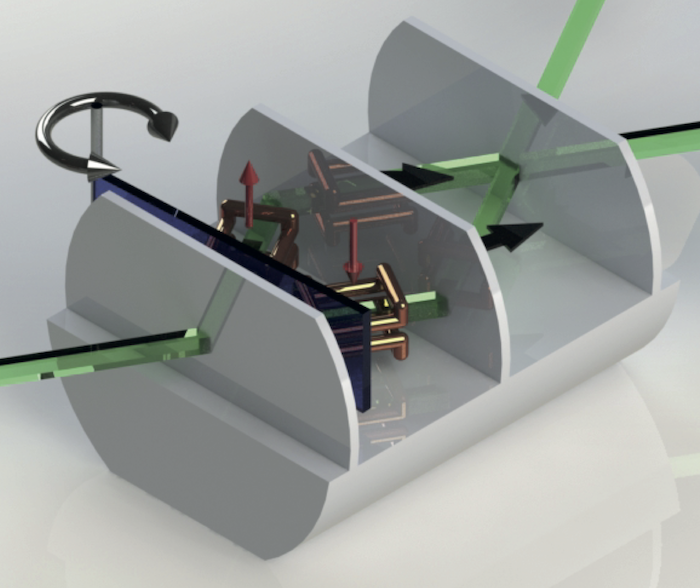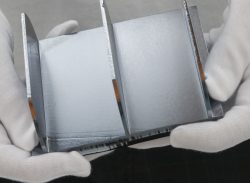
Experimental Demonstration of Direct Path State Characterization by strongly measuring Weak Values
January 7, 2017 8:32 amNuclear spin tomography or magnetic resonance tomography MRT (often also referred to as magnetic resonance imaging MRI) is a (human) medical application of nuclear magnetic resonance NMR most people known either from hospitals or medical drama television series. Here, the patient absorbs and re-emits electromagnetic radiation in all directions in space, that are later detected and from which 3D images (or 2D slice images) can be reconstructed. If we now switch from medical examination room to fundamental science laboratory, by replacing the patient by a quantum object and the electromagnetic radiation by a quantum measurement, we finally end up with a procedure referred quantum state tomography – the basic principle is quite similar.
Quantum state tomography (see here for details) is the process of reconstructing, or more precisely completely characterizing, the quantum state of an object which is emitted by a source. This technique has become an essential tool in the emerging field of quantum technologies, such as quantum communication or quantum computing. The theoretical framework of quantum state tomography dates back to the 1970s, and experimental implementations are nowadays routinely carried out in a wide variety of quantum systems. The basic principle of quantum state tomography is to repeatedly perform measurements from different spatial direction – on the quantum systems in order to uniquely identify the system’s quantum state. Nevertheless, for quantum state tomography a lot of computational post-processing of the measured data is required to deduce the initial quantum state from the observed measurement results – all together a high expenditure.
Consequently, in 2011 a novel, more direct tomographical method was established that makes it possible to determine the quantum state without the need for post-processing. However, that novel method had a major drawback: it uses minimally disturbing measurements, so called weak measurements, to determine the system’s quantum state. The basic idea behind weak measurements is to gain very little information about the observed system, by keeping the disturbance on it, caused by the measurement process, (negligible) small. Since the amount of information that is gained in this procedure is very small the measurements have to be repeated many many times – a huge disadvantage of this measurement procedure in practical applications.
Now we managed to combine these two methods and got the benefits from both of them (see here for details of our experimental procedure). We were able to further develop the method established in 2011 in such way that the need of computational post-processing becomes obsolete. Thus, we were able to intergrade usual, so-called strong measurements in the direct measurement procedure of the quantum state. This made it possible to determine the quantum state with higher precision and accuracy in a much shorter time, compared to the approach with weak measurements – a tremendous progress. Our results are presented in the journal “Physical Review Letters” 1.

We carried out an experimental test of our new scheme in a neutron interferometric experiment. Neutron interferometry is based on the wave nature of neutrons, which are massive nuclear constituent that form up almost two thirds of our universe. Nevertheless, if the are isolated from the atomic nucleus, for example in the fission process of a research reactor, they can behave like waves. This phenomenon is usually refereed the as wave-particle duality, which is explained in the framework of quantum mechanics. Inside the interferometer partial wave-function of the individual interferometer paths are created and recombined coherently afterwards, resulting in interference effects. The experiment was done at the neutron source at the Institut Laue-Langevin (ILL) in Grenoble, where our group is in charge of a permanent beam port.

It is important to notice, that our results are not limited to the quantum system formed by single neutrons, but are in fact completely general. Therefore, they can be applied to many other quantum systems such as photons, trapped ions or superconducting qubits. Our results might have a big impact on how quantum state estimation is performed in the future and are foreseen to be exploited in the rapidly evolving technologies applied in quantum information science.
1. T. Denkmayr, H. Geppert, H. Lemmel, M. Waegell, J. Dressel, Y. Hasegawa, and S. Sponar,
Physical Review Letters 118, 010402 (2017) [quant-ph/1604.04102].↩
press release TU Wien, Vienna, Austria (see here for german version)
press release Institut Laue-Langevin (ILL), Grenoble